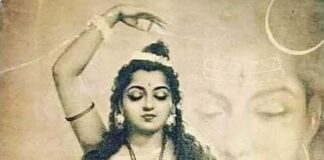Hiuen Tsang was a Buddhist monk, scholar, translator and a traveler who came on a knowledge search expedition to India in order to find the missing link between the Buddhism followed in China and India during the 17th century under the Tang dynasty.
By Prathima.G.Kulkarni
Hiuen Tsang was initially named as Chen Hui which he later changed taking the Tang dynasty’s name.He was born in 602 A.D in Chenhe Village, Goushi Town and died on 664 A.D in Yuhua Palace. It is said that Tsang was very intelligent and dedicated which amazed his father. His earlier education was provided by his father who instructed him the classical works on Filial Piety (Showing respect to parents and others) and several other canonical theories of orthodox Confucianism.
Confucianism is said to be a system of social and ethical philosophies instead of a religion in general. It is built on an ancient religious foundation, to develop the social values, institutions, and transcendent ideals of traditional Chinese society.
When Hiuen was very young he found Buddhism to be very interesting and wanted to learn about it and become a monk. This made him approach abbot Zheng Shanguo at the age of thirteen. At the age of twenty, he was fully ordained as a Bhuddist monk. The many differences and discrepancies in the texts that he studied, prompted Hiuen to go to India and study Buddhism.
He approached the Chinese emperor seeking permission to go to India to seek knowledge but, he was disappointed as he did not get the permission. So, he decided to slip away and come to India during 629 A.D. He crossed the Gobi desert, visited several places in the Central Asia such as Kashagar, Samarkand and Balkha and reached Afghanistan. In Afghanistan he met a large number of Buddhist monks and followers and visited stupas and monasteries in different places along with the worshipers of Sun.
He reached Taxila from Peshawar in India via Afghanistan within a year from the start of his journey. For nearly fourteen years he was in India studying about Buddhism, meeting monks and visiting many places. He visited Mathura, Kannauj, Sravasti, Ayodhya, Kapilvastu, Kusinagara, Sarnath, Vaisali, Pataliputra, Rajagraha, Bodha-Gaya and Nalanda.
He was at the University of Nalanda for about five years where he studied logic, grammar, Sanskrit and the Yogacara school of Buddhism. He also met Silabhadra who was the superior of the monastery. It is said that Silabadra had a dream of Hiuen Tsang’s visit which will help spread the holy law of Buddhism. Silabadra was trained by Dharmapala the Mahayana Idealism and thus he was in a position to make available to the world the entire knowledge of Buddhist idealism and the Siddhi Xuanzang’s great philosophical treatise which is none other than the Summa of the doctrine, the fruit of seven centuries of Indian Buddhist thought.
During his stay, he was invited by King BhaskaraVarman of Kamarupa to be his guest and stay at his palace. BhaskarVarman was a confidant of Harshavadhana (Harsha) and thus Hiuen Tsang got invited to the court of Harsha. Emperor Harsha wanted to honor Tsang and had called for a religious assembly which was held at Kannauj. Another religious ceremony was held at Prayag which was also attended by Tsang.
Tsang left India in 644 A.D. taking the same route by which he had entered. With him he took many images of Buddha and copies of different Buddhist religious texts as reference to his study. When he reached back China, he was honored by the then Chinese emperor. He later wrote about his experience of India at the instance of the Emperor.








